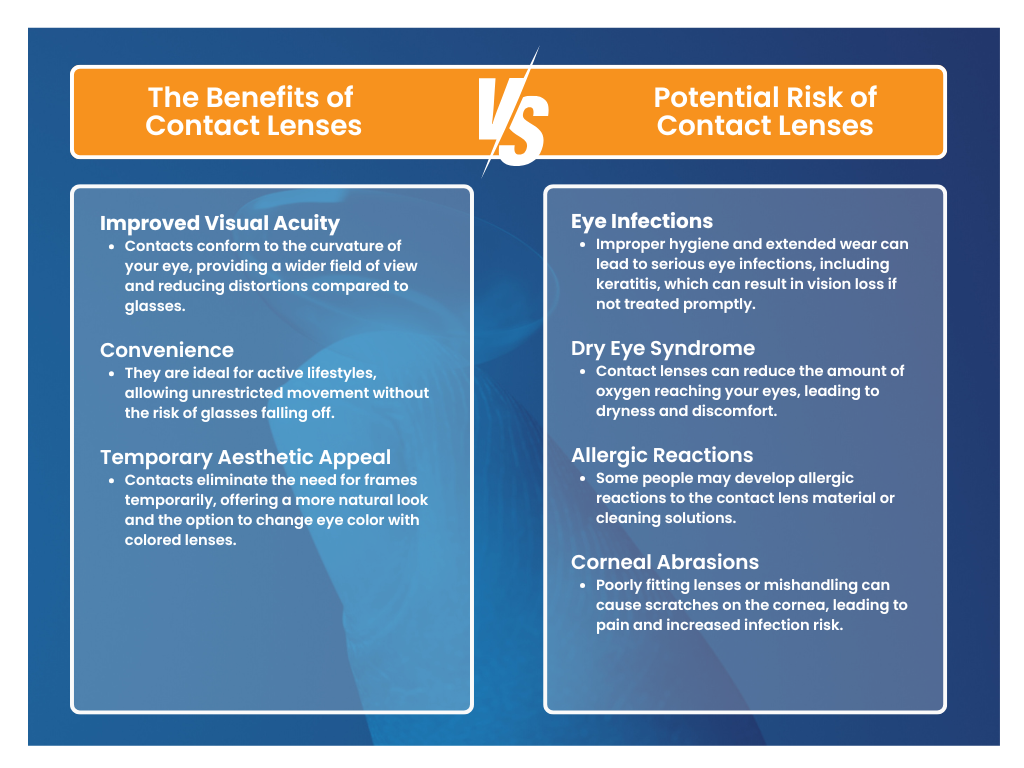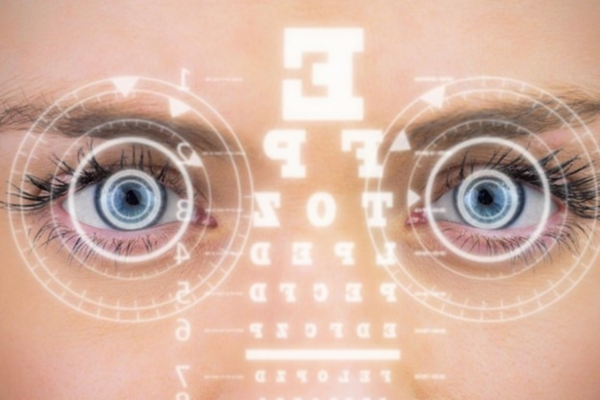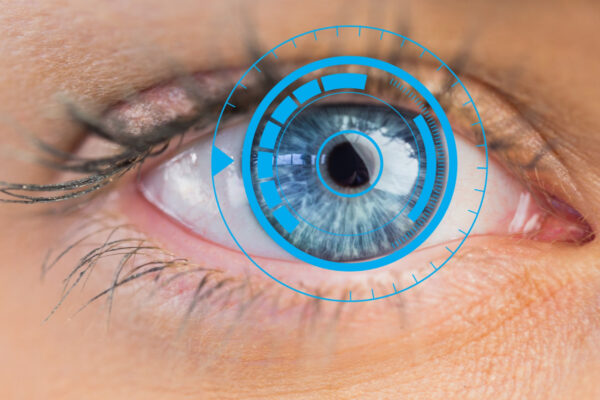Contact lenses are a popular choice for vision correction, offering convenience and improved aesthetics over traditional glasses. Millions of people worldwide use contact lenses daily, enjoying the freedom they provide. However, you may ask yourself: are contacts safe for long-term use? Despite their popularity, contact lenses come with inherent risks and potential complications that should not be overlooked. Lets dive into the benefits and risks of contacts and review a safer option for your vision needs.
Understanding Contact Lenses: Benefits and Risks
Contact lenses offer a convenient and visually appealing alternative to glasses. However, they also come with potential risks, including eye infections, dry eye syndrome, and allergic reactions.

LASIK: A Superior Alternative to Contact Lenses
Contacts can carry risks if hygiene practices are not strictly followed and long-term use of contacts can also lead to discomfort and dry eyes. On the other hand, LASIK is considered very safe with minimal risk of complications, particularly when performed by experienced surgeons. LASIK (Laser-Assisted In Situ Keratomileusis) has emerged as a superior alternative to contact lenses for many individuals. This laser eye surgery offers a permanent solution to correct vision issues such as myopia, hyperopia, and astigmatism.
The Benefits of LASIK
- Permanent Vision Correction: Unlike contact lenses, LASIK offers a permanent solution, significantly reducing or eliminating the need for corrective eyewear.
- Quick Recovery: Most patients experience improved vision within 24 hours and can resume normal activities shortly after the procedure.
- Enhanced Quality of Life: LASIK can improve your overall quality of life, providing the freedom from daily maintenance associated with contact lenses.
- Safety and Efficacy: Advances in technology have made LASIK safer and more effective, with a high success rate and minimal complications.
The LASIK Procedure: What to Expect
- Consultation and Evaluation: The process begins with a comprehensive eye examination to determine if you are a suitable candidate for LASIK. Your eye doctor will assess your vision, eye health, and corneal thickness.
- Pre-Procedure Preparation: On the day of the surgery, you will receive numbing eye drops to ensure a painless experience. The surgeon will use a femtosecond laser to create a thin flap on the cornea.
- Reshaping the Cornea: A second laser, the excimer laser, reshapes the underlying corneal tissue to correct vision. The flap is then repositioned, acting as a natural bandage.
- Post-Procedure Care: After the surgery, you will need to follow post-operative care instructions to ensure proper healing. This may include using prescribed eye drops and avoiding strenuous activities for a minimal period of time.
Comparing Costs: Contacts vs. LASIK
While LASIK has a higher upfront cost compared to contact lenses, it can be more cost-effective in the long run. The ongoing expenses of contact lenses, including cleaning solutions and regular replacements, can add up over the years. LASIK eliminates these recurring costs, making it a more economical option for many people.
Financial Considerations
Initial Investment
Initial Investment
The cost of LASIK typically ranges from $2,000 up to $4,000 per eye, depending on the surgeon’s expertise and the technology used.
Payment Options
Payment Options
There are many ways to afford LASIK. Many people finance their procedures, at a monthly cost that has been compared to a utility bill. In addition, some choose to put the balance on a rewards-bearing credit card for points, miles, etc.
Savings Over Time
Savings Over Time
Consider the annual cost of glasses, contacts, eye exams and supplies. LASIK can pay for itself within a few years, resulting in significant long-term savings.
Safety and Effectiveness of Contacts and LASIK
When weighing the safety and effectiveness of contact lenses against LASIK, it is important to consider the long-term implications for your eye health. Choosing between contact lenses and LASIK ultimately depends on your lifestyle, budget, and vision goals. While contact lenses offer a non-surgical solution with flexibility, LASIK provides a permanent correction that can enhance your quality of life.
Key Considerations
- Lifestyle Needs: If you lead an active lifestyle and desire freedom from daily lens maintenance, LASIK might be the better option.
- Long-Term Vision Health: Consider the long-term impact on your eye health and the potential risks associated with prolonged contact lens use.
- Financial Investment: Weigh the initial cost of LASIK against the cumulative expenses of contact lenses over time.
Embracing Clear Vision with LASIK
Both contact lenses and LASIK offer viable solutions for vision correction, each with its own set of advantages and considerations. However, for those seeking a safe long-term, hassle-free solution, LASIK stands out as the superior choice. By opting for LASIK, you can enjoy the benefits of clear vision without the ongoing maintenance and risks associated with contact lenses.
Take the first step towards better vision by scheduling a free LASIK consultation today!

Find a LASIK Surgery Location Near You
We’re located nationwide – it’s easy to find a LASIK Vision Center near you.
About The Author
Dr. George Joseph is a fellowship-trained ophthalmologist and has performed over 150,000 LASIK surgeries and nearly 20,000 cataract procedures. He earned his degree from Georgetown University Medical School in Washington D.C., where he was at the top of his class and the youngest graduating physician.
Categories:



